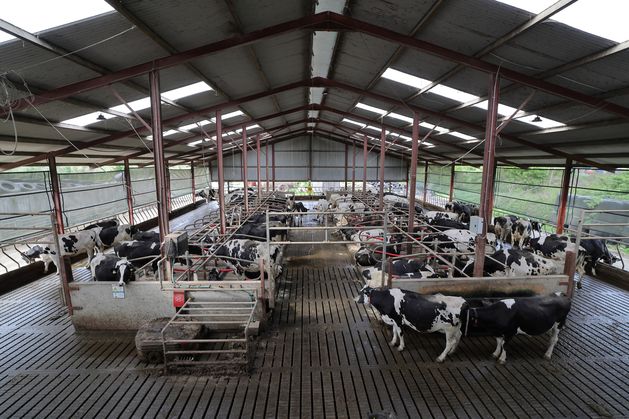Livestock farming is not the only impacted sector that I note travelling the country, as cereal sowing and potato and beet harvesting etc are all at a standstill.
One standout issue that is cropping up on a lot of the farms I am calling to is the stress that the housed animals are under, stemming from the unseasonably warm temperatures and poor ventilation.
Farmers and vets are reporting significant increase in viral outbreaks and bacterial hoof infections.
Historically, ventilation was a low priority for Irish farmers. The old traditional cattle byres worked for a number of reasons, including lower stocking rates and the feed regimes used.
Increasing stocking rates and more intensive feeding, along with higher autumn temperatures, are increasing the viral and bacterial infections rates in housed animals at this time.
Apart from factors outside farmers’ control such as warm temperatures and lack of wind, poorly designed buildings contribute significantly to poor ventilation.
In the late 1970s and ’80s, there was a surge in the building of slatted houses, characterised by low eaves and low roof pitch.
This design did not take into account the need for ventilation, but for the most part, these houses worked well, mainly due to the absence of some of the viruses that currently prevail.
The proliferation of grant-supported building in the 1990s and 2000s brought an improvement in the general design, where air space and light was increased, but ventilation or air movement was impeded through the overuse of side sheeting.
The grant-aided designs heavily relied on spacing between the roof sheeting to create the ‘stack effect’, but in most cases, this is inadequate.
A useful exercise that I am encouraging farmers to do is to set off a simple smoke bomb in all cattle houses to gauge ventilation.
This should be done on an average day, where there is not a gale blowing or when we are in the doldrums. In a well-ventilated building, the smoke should be pulled to the highest points and vented out, illustrating that air is moving upwards and pulling in fresh air.
If this smoke dissipation is not occurring, it is vital to consider the use of mechanical ventilation systems. Housing ventilation is a very specialist area and I would strongly encourage farmers to engage an expert.
These experts will provide guidance on the most appropriate solution, be it mechanical ventilation or changes to the roof or side-sheeting design.
The most immediate solution is to install fans or wind tubes, but these are more costly than natural ventilation systems.
In recent weeks I have seen large extractor fans used to great effect in older, lower-pitched buildings, whereas in more recently constructed but poorly ventilated buildings, strategically placed circulation fans are what work best.
Apart from the risk of disease infection, animal performance will be greatly impeded in poorly ventilated buildings. Their body temperature will be increased, as will sweating, causing them great discomfort.
It is well proven that shaving the animal’s back will alleviate the raised body temperature, but on many busy farms this is a job that falls by the wayside.
Gerry Giggins is an animal nutritionist based in Co Louth

